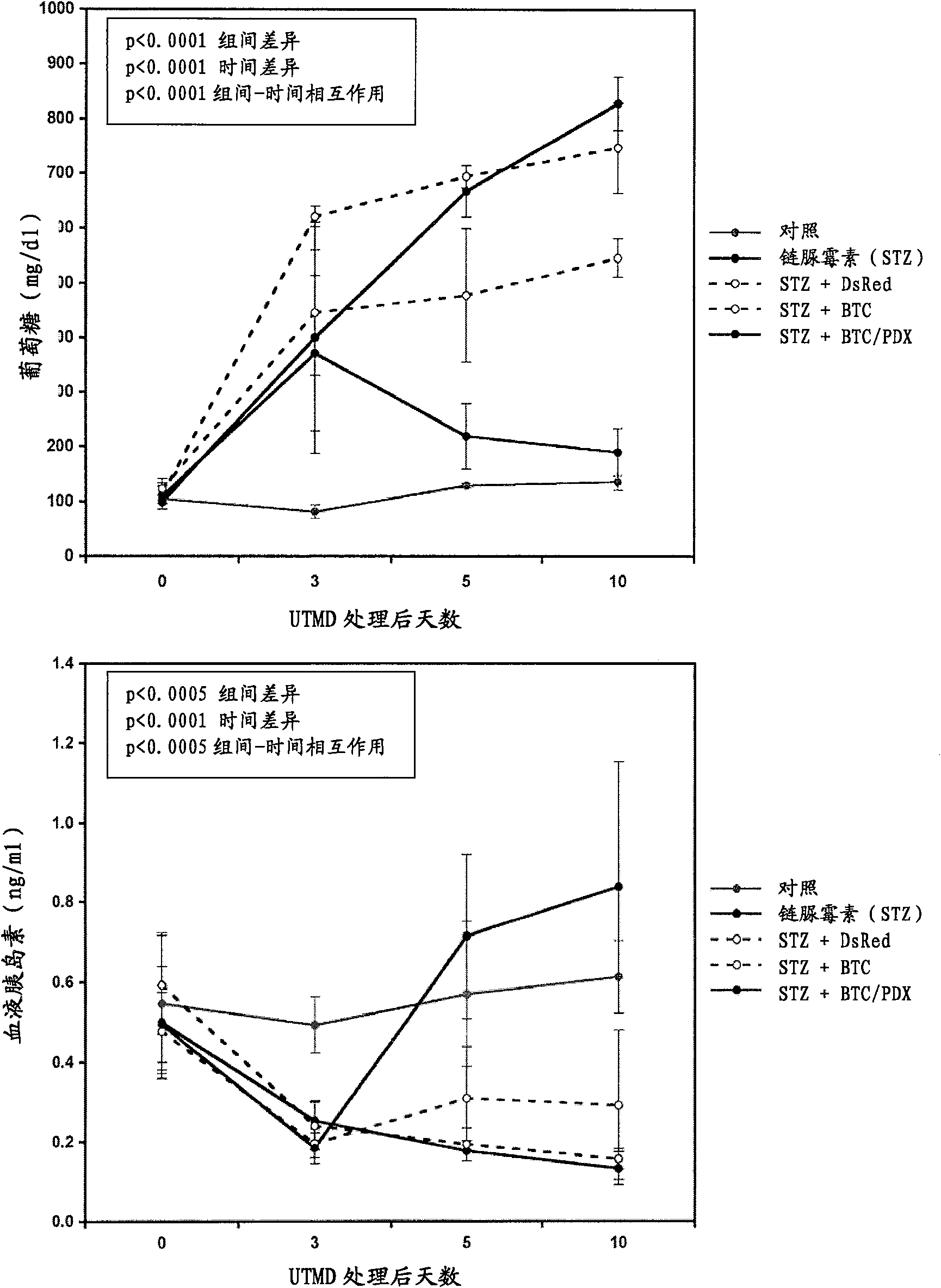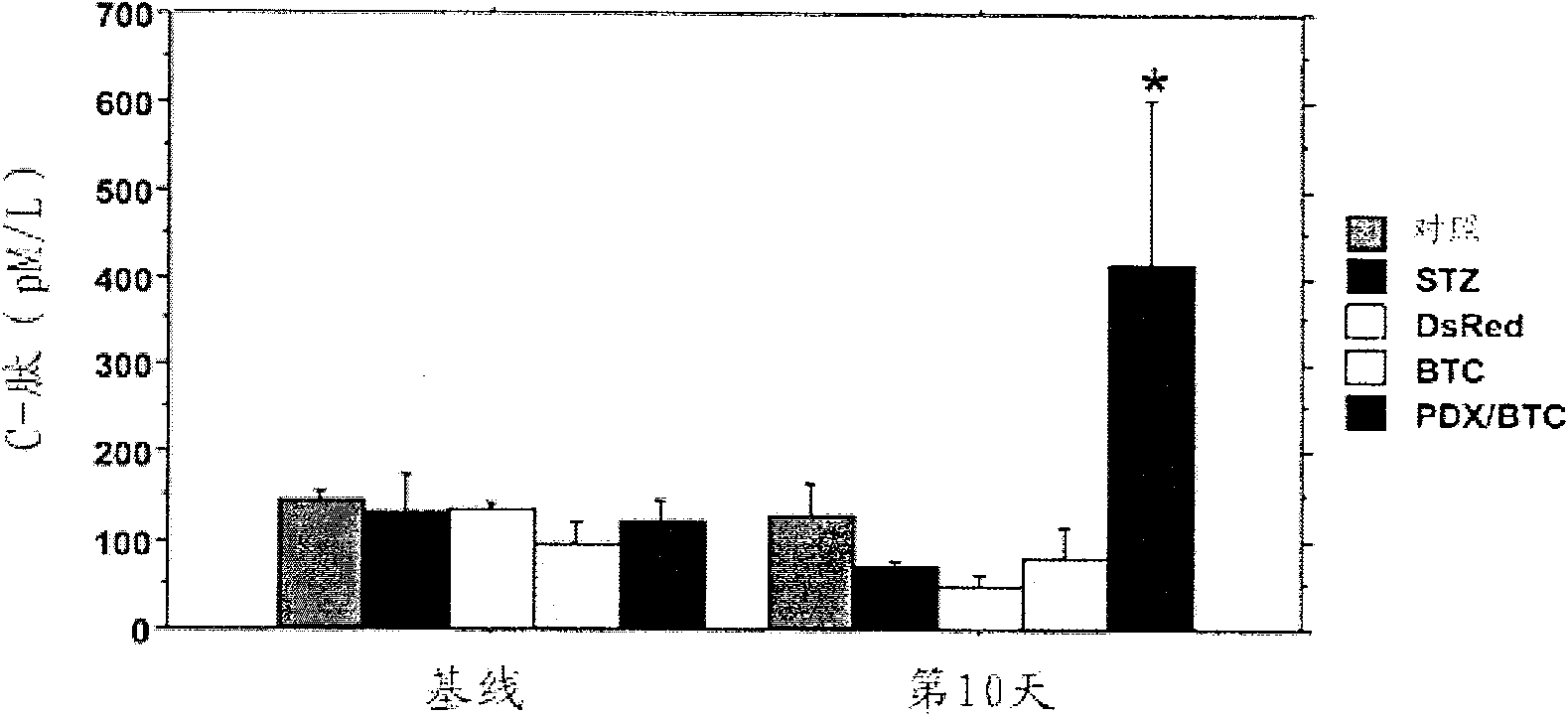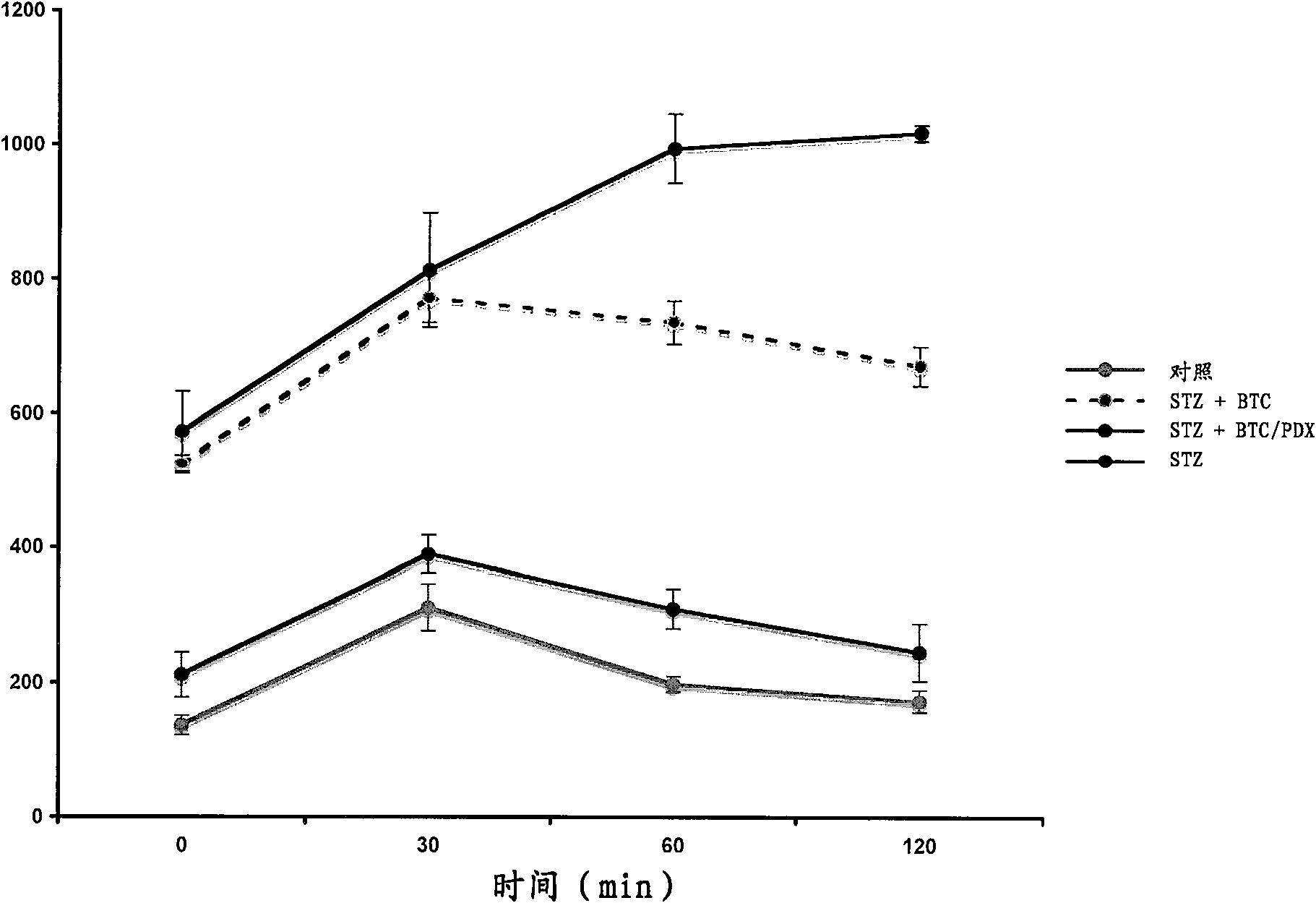In vivo transformation of pancreatic acinar cells into insulin-producing cells
A technology of acinar cells and insulin, applied in the field of mammals, including human beings, can solve the problem of not achieving long-term treatment of diabetes.
- Summary
- Abstract
- Description
- Claims
- Application Information
AI Technical Summary
Problems solved by technology
Method used
Image
Examples
Embodiment 1
[0065] Example 1. Gene therapy with PDX1 and BTC produces islet-like clusters containing predominantly α-cells that disappear by day 30. The ability to convert acinar cells into glucose-responsive insulin-producing cells was shown for the first time to harness the ability of UTMD with BTC and PDX1 to regenerate normal islet function. UTMD provides an in vivo non-invasive method to detect candidate genes for islet regeneration in adult animal models of diabetes.
[0066] Animal Protocol and UTMD. Animal studies were performed according to NIH recommendations and approval by the Committee on Experimental Animal Research. Male Sprague-Dawley rats (200-250 g) were anesthetized by intraperitoneal injection of ketamine (60 mg / kg) and xylazine (5 mg / kg). The left abdomen and neck were shaved, and polyethylene tubing (PE50, Becton Dickinson, MD) was inserted through the incision into the right internal jugular vein. In the first experiment, 24 rats received one of 5 treatments: 1. ...
Embodiment 2
[0069] Example 2. Preparation of plasmid-containing lipid-stabilized microvesicles. Lipid-stabilized microvesicles were prepared following the method described by the inventors previously (6). Briefly, 250 μl of DPPC (1,2-dipalmitoyl-sn-glycero-3-phosphocholine, Sigma, St. Louis, MO) 2.5 mg / ml of DPPE (1,2-dipalmitoyl -sn-glyceryl-3-phosphatidylethanolamine, Sigma, St.Louis, MO) 0.5mg / ml solution and 50 μl of pure glycerol were added to a 1.5ml vial containing 2 mg of dry plasmid, and 20 μg of dexamethasone ( dexamathasone) were mixed thoroughly and incubated at room temperature for 30 min. The remaining headspace was filled with perfluoropropane gas (AirProducts, Inc, Allentown, PA), followed by dental amalgamator, Vialmix TM , Bristol-Myers Squibb Medical Imaging, N. Billerica, MA) mechanically shake for 30 seconds. The average diameter and concentration of microvesicles were measured with a particle counter (Beckman Coulter Multisizer III).
[0070] Plasmid construction...
PUM
| Property | Measurement | Unit |
|---|---|---|
| pore size | aaaaa | aaaaa |
Abstract
Description
Claims
Application Information
 Login to View More
Login to View More - R&D Engineer
- R&D Manager
- IP Professional
- Industry Leading Data Capabilities
- Powerful AI technology
- Patent DNA Extraction
Browse by: Latest US Patents, China's latest patents, Technical Efficacy Thesaurus, Application Domain, Technology Topic, Popular Technical Reports.
© 2024 PatSnap. All rights reserved.Legal|Privacy policy|Modern Slavery Act Transparency Statement|Sitemap|About US| Contact US: help@patsnap.com










